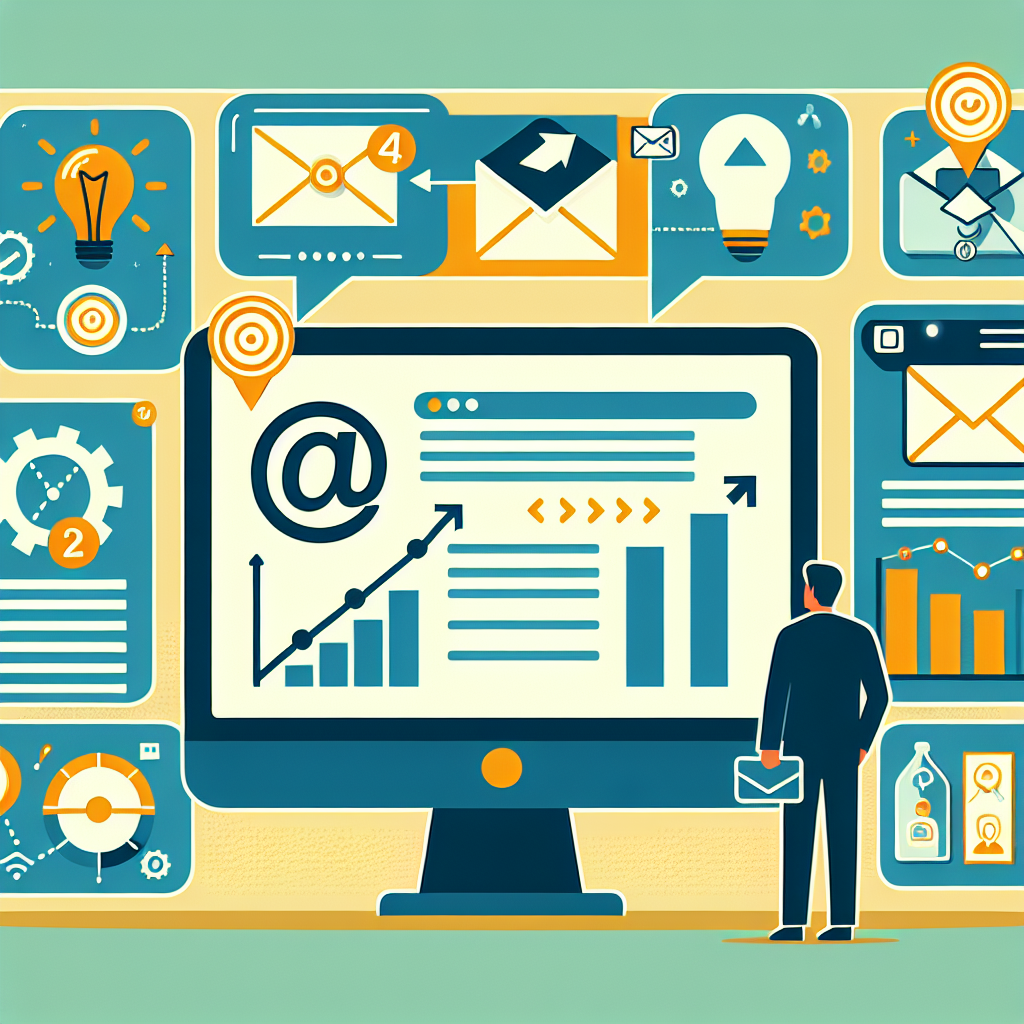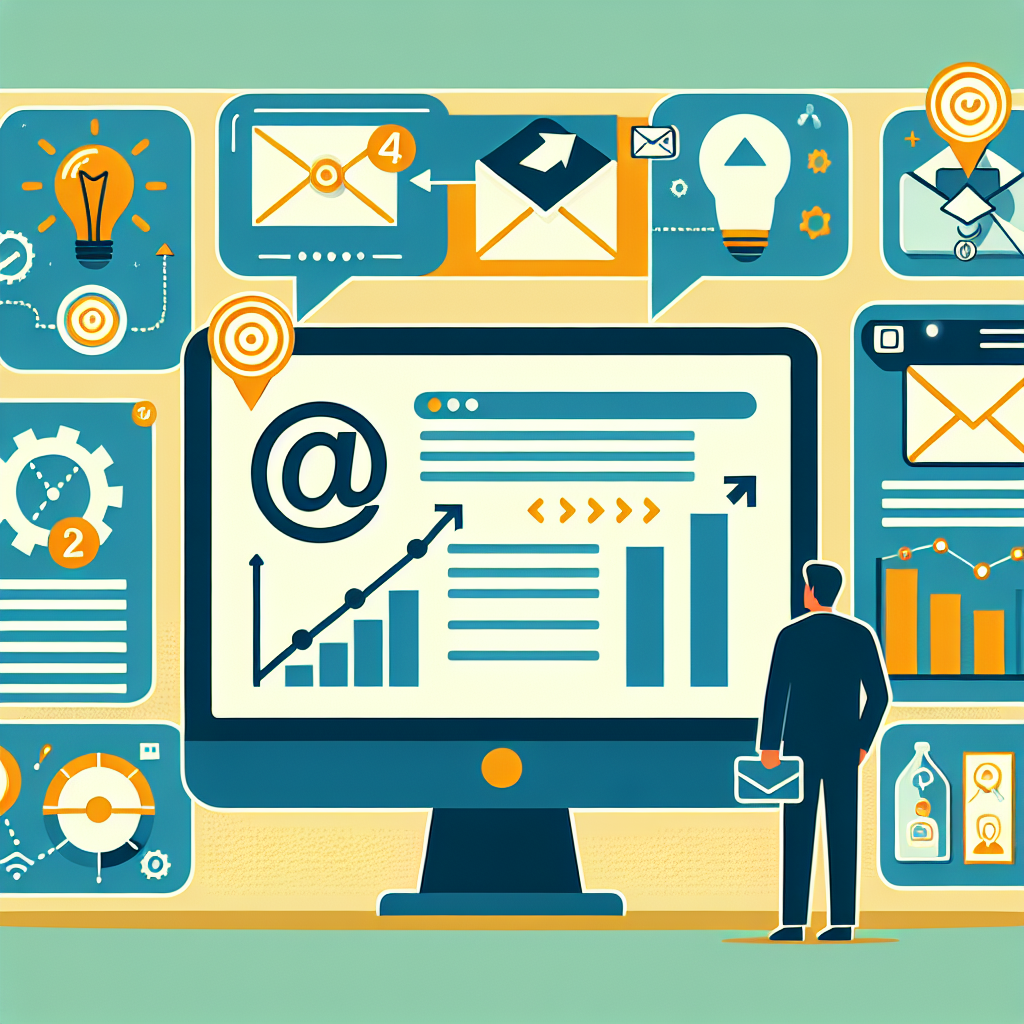Are you looking to boost the success of your email marketing efforts? Look no further than Mailchimp! In this article, you will discover the ins and outs of using Mailchimp to effectively promote your business through email marketing. From creating captivating email campaigns to analyzing their performance, you’ll learn valuable tips and tricks to optimize your marketing strategy and engage with your target audience more effectively. Let’s dive in and explore the world of email marketing with Mailchimp!

Choosing Mailchimp as Your Email Marketing Tool
Why choose Mailchimp?
When it comes to email marketing, Mailchimp is a top choice for many businesses and individuals alike. With its user-friendly interface, powerful features, and extensive capabilities, Mailchimp makes it easy for anyone, regardless of their level of expertise, to create and manage effective email campaigns. Whether you’re a small business owner, a marketer, or an entrepreneur, Mailchimp offers the tools and resources you need to reach your audience, drive engagement, and achieve your email marketing goals.
Creating a Mailchimp account
Getting started with Mailchimp is quick and easy. To create an account, simply visit the Mailchimp website and click on the “Sign Up Free” button. From there, you will be prompted to enter your email address, username, and password. Once you’ve completed the registration process, you can begin exploring the various features and functionalities of Mailchimp.
Exploring Mailchimp’s features
Mailchimp offers a wide range of features that can help you streamline your email marketing efforts and maximize your results. From designing beautiful email campaigns to segmenting your audience and automating your communications, Mailchimp has all the tools you need in one convenient platform. Some of the key features you can expect to find in Mailchimp include customizable templates, intuitive drag-and-drop editors, advanced analytics, automation workflows, and integration options with other platforms.
Building Your Email List
Importing contacts to Mailchimp
Once you’ve set up your Mailchimp account, the next step is to start building your email list. One of the easiest ways to do this is by importing your existing contacts into Mailchimp. Whether you have a list of subscribers from a previous email marketing platform or a list of customers from your e-commerce store, Mailchimp provides a simple process for importing these contacts. By following a few steps and ensuring that your contacts have given you permission to email them, you can quickly add them to your Mailchimp audience.
Creating an opt-in form
Another effective method for growing your email list with Mailchimp is by creating an opt-in form. An opt-in form is a sign-up form that allows visitors to your website or blog to provide their email addresses and opt-in to receive your newsletters or updates. Mailchimp provides a variety of customizable sign-up form templates that you can easily embed on your website or share on social media platforms. By strategically placing these forms on your website and offering a valuable incentive for signing up, you can capture the email addresses of interested individuals and add them to your Mailchimp audience.
Using Mailchimp’s sign-up forms
In addition to creating your own opt-in forms, Mailchimp also offers pre-designed sign-up forms that you can use to attract new subscribers. These forms can be easily customized to match your brand’s visual identity and can be embedded on your website or shared via a direct link. Mailchimp’s sign-up forms come with various advanced features, such as GDPR compliance options, reCAPTCHA integration to prevent spam subscriptions, and the ability to segment subscribers based on their sign-up sources. By taking advantage of these sign-up forms, you can expand your email list and target specific audiences with tailored content.
Designing Your Email Campaign
Selecting a template
When it comes to designing your email campaigns, Mailchimp provides a wide selection of professionally designed templates to choose from. These templates are customizable and cater to different industries, styles, and purposes. From newsletters to promotional offers and event invitations, Mailchimp templates offer a range of options to suit your specific needs. Simply browse through the template library, select the one that resonates with your brand, and start customizing it to match your desired look and feel.
Customizing your email design
Once you’ve chosen a template, the next step is to personalize it to align with your branding and messaging. Mailchimp’s drag-and-drop editor makes customizing your email design a breeze. With its intuitive interface, you can easily add or remove elements, rearrange sections, and change colors and fonts without any coding knowledge. This allows you to create professional-looking emails that reflect your unique brand identity and captivate your audience.
Adding content and images
After customizing your design, it’s time to fill your email with engaging content and eye-catching images. Mailchimp’s editor allows you to add text, images, buttons, and other interactive elements to ensure that your email delivers the right message to your subscribers. You can also leverage Mailchimp’s content studio to store and organize your media files, making it convenient to access and insert them into your emails. By combining compelling copy and visually appealing imagery, you can create emails that resonate with your audience and drive action.
Segmenting Your Audience
Understanding the importance of segmentation
Segmentation is a crucial aspect of email marketing that allows you to divide your audience into smaller, targeted groups based on specific criteria. By segmenting your audience, you can create personalized and highly relevant email campaigns that resonate with each subgroup. This not only improves the overall effectiveness of your email marketing efforts but also enhances the subscriber experience, leading to higher engagement and conversion rates.
Creating segments in Mailchimp
Mailchimp offers robust segmentation features that enable you to create segments based on a variety of criteria, such as demographics, past purchase behavior, interests, and engagement levels. With Mailchimp’s segmentation tools, you can easily filter your audience and create segments that accurately reflect the different personas within your subscriber base. By leveraging this functionality, you can send targeted messages that speak directly to the needs and preferences of each segment.
Personalizing your campaigns using segments
Once you’ve created your segments, it’s time to put them to use by personalizing your email campaigns. Mailchimp’s personalization options allow you to dynamically insert subscriber-specific information, such as their name, location, or purchase history, into your emails. By tailoring your campaigns to the individual needs and preferences of each segment, you can significantly increase engagement and conversion rates. Personalization also helps to foster a stronger connection with your audience, making them more likely to continue engaging with your brand.

Writing Effective Email Copy
Crafting attention-grabbing subject lines
The subject line of your email is the first thing your subscribers see, so it’s crucial to make it compelling and attention-grabbing. Mailchimp provides tips and best practices for crafting subject lines that entice recipients to open your emails. By experimenting with different techniques, such as using curiosity, urgency, or personalization, you can increase open rates and encourage subscribers to explore the content of your email.
Writing compelling email content
Once you’ve captured your audience’s attention with an enticing subject line, it’s essential to provide valuable and engaging content throughout the body of your email. Mailchimp’s editor allows you to easily format your text, insert images and videos, and create eye-catching calls to action. When crafting your email content, it’s important to focus on providing relevant information, addressing pain points, and offering solutions or benefits. By delivering valuable content, you can build trust with your subscribers and establish yourself as an authority in your industry.
Using a conversational tone
In email marketing, it’s crucial to strike the right tone to resonate with your audience. Mailchimp encourages the use of a conversational tone when communicating with subscribers. By using relaxed and friendly language, you can create a more personal connection with your audience and encourage them to engage with your emails. Avoid using overly formal or salesy language and strive to create a sense of authenticity and approachability throughout your email copy.
Automating Your Email Campaigns
Understanding automation in Mailchimp
Automation is a powerful feature offered by Mailchimp that allows you to streamline and optimize your email marketing efforts. With Mailchimp’s automation tools, you can set up pre-designed email series, known as workflows, to be sent automatically at specific times or triggered by subscriber actions. This frees up your time, ensures consistent and timely communication with your audience, and allows you to nurture your leads or customers without manual intervention.
Setting up automated email series
To set up an automated email series in Mailchimp, you simply need to select the desired workflow template and customize it to match your objectives. Whether you want to welcome new subscribers, onboard new customers, or re-engage inactive subscribers, Mailchimp offers a variety of pre-built workflows designed to address common marketing scenarios. By defining the triggers, delays, and actions for each email in your series, you can create a powerful automated campaign that nurtures your audience and guides them through their customer journey.
Creating personalized automated workflows
Mailchimp’s automation features go beyond basic email series by allowing you to create personalized workflows based on specific subscriber behaviors or traits. With Mailchimp’s conditional logic, you can tailor the path your subscribers take depending on their actions or characteristics. For example, you can create a workflow that sends a follow-up email with a discount code to subscribers who have made a purchase or send a re-engagement email to subscribers who haven’t opened your emails in a while. By leveraging the power of personalized automation, you can deliver highly relevant and timely messages that resonate with your subscribers.
Analyzing Email Campaign Performance
Tracking email open rates and click-through rates
Understanding the performance of your email campaigns is vital to improving their effectiveness over time. Mailchimp provides comprehensive analytics that allow you to track key metrics such as email open rates and click-through rates. By monitoring these metrics, you can gain insights into how your campaigns are performing, which subject lines are driving higher open rates, and which content is generating more engagement. Armed with this information, you can make data-driven decisions to optimize your future campaigns and achieve better results.
Analyzing campaign reports in Mailchimp
Mailchimp’s reporting capabilities go beyond basic open and click tracking. Their campaign reports provide detailed insights into various aspects of your email campaigns, including bounce rates, unsubscribes, social media activity, and geographic data. With these reports, you can delve deeper into the performance of specific campaigns, compare different campaigns against each other, and identify trends or patterns that can inform your email marketing strategy. Mailchimp also offers the ability to export your reports for further analysis or share them with other team members or stakeholders.
Using A/B testing to optimize campaigns
To ensure continuous improvement of your email campaigns, Mailchimp offers A/B testing functionality. This feature allows you to test different elements of your campaigns, such as subject lines, content variations, or call-to-action buttons, to determine which version performs better with your audience. By running A/B tests, you can make informed decisions based on real data and optimize your campaigns for maximum engagement and conversion. Mailchimp’s A/B testing options make it easy to set up, execute, and analyze your tests, enabling you to continuously refine and improve your email marketing strategy.
Implementing Email Marketing Best Practices
Building a responsive email list
An essential best practice in email marketing is to build and maintain a responsive email list. This means ensuring that your subscribers have willingly opted in to receive emails from you and are genuinely interested in your content. Mailchimp provides tools to help you grow your email list organically, such as double opt-in confirmation and GDPR compliance features. Additionally, regularly cleaning your email list by removing inactive or unengaged subscribers can help improve your deliverability and overall engagement rates.
Ensuring compliance with anti-spam laws
Compliance with anti-spam laws is crucial to maintain a positive reputation as an email marketer and to protect the privacy and trust of your subscribers. Mailchimp is designed to help you stay compliant with these laws by providing features such as GDPR options, unsubscribe links in every email, and compliance with CAN-SPAM regulations. It’s important to familiarize yourself with the laws and regulations in your specific jurisdiction and ensure that your email marketing practices align with them.
Maintaining email deliverability
Email deliverability is a key factor in the success of your email marketing campaigns. Mailchimp takes deliverability seriously and employs various measures to ensure that your emails are delivered to your subscribers’ inboxes. However, there are best practices you can follow to further enhance your deliverability rates. These include regularly monitoring your email sending reputation, adhering to industry authentication standards (such as SPF and DKIM), avoiding spam trigger words, and keeping your email list clean and engaged.
Integrating Mailchimp with Other Platforms
Connecting Mailchimp with your website or blog
To maximize the impact of your email marketing efforts, it’s important to integrate Mailchimp with your website or blog. Mailchimp offers various options for integration, allowing you to seamlessly collect email addresses and synchronize your subscriber data. By connecting Mailchimp to your website, you can embed sign-up forms, track website visitor activity, and leverage automation triggers based on user actions. This integration ensures that your email marketing efforts are closely aligned with your overall online presence and marketing strategy.
Integrating Mailchimp with CRM platforms
For businesses that rely on customer relationship management (CRM) software, integrating Mailchimp with your CRM platform can streamline your marketing and sales processes. Mailchimp offers integrations with popular CRM platforms, such as Salesforce, HubSpot, and Zoho CRM, allowing you to sync contact information, track email campaign engagement, and nurture leads seamlessly. By bringing together the power of Mailchimp’s email marketing and your CRM platform’s customer data, you can create highly targeted campaigns and deliver a personalized experience to your subscribers.
Using Mailchimp with e-commerce platforms
If you operate an e-commerce store, integrating Mailchimp with your e-commerce platform can unlock a range of marketing opportunities. Mailchimp provides integrations with leading e-commerce platforms, including Shopify, WooCommerce, and Magento, enabling you to sync customer data, automate post-purchase follow-ups, and recommend personalized product recommendations. By leveraging the integration between Mailchimp and your e-commerce platform, you can create targeted campaigns that drive sales, nurture customer relationships, and encourage repeat purchases.
Optimizing Your Email Marketing Strategy
Monitoring and improving email performance
An effective email marketing strategy requires constant monitoring and optimization. By regularly reviewing your email performance metrics, such as open rates, click-through rates, and conversion rates, you can identify areas for improvement and make data-driven decisions. Experimenting with different elements, such as subject lines, send times, or content variations, can also help you optimize your email campaigns and achieve better results over time. Continuously analyzing and refining your strategy is key to staying relevant and achieving your email marketing goals.
Experimenting with different campaign elements
In the ever-evolving landscape of email marketing, it’s essential to experiment with different campaign elements to stay ahead of the curve. Mailchimp allows you to easily test and iterate on various aspects of your campaigns, such as subject lines, content, design, or segmentation strategies. By constantly experimenting and learning from the results, you can uncover new insights, identify trends, and adapt your approach accordingly. Embracing a mindset of continuous improvement and innovation can help you optimize your email marketing strategy and drive better outcomes.
Staying up-to-date with email marketing trends
To remain competitive in the world of email marketing, it’s important to stay informed about the latest trends and best practices. Mailchimp provides resources such as blog articles, case studies, and educational content to help you stay up-to-date with industry insights and trends. By keeping abreast of emerging technologies, design trends, and changes in consumer behavior, you can adapt your email marketing strategy to meet the evolving needs and preferences of your audience. This proactive approach to staying informed will ensure that your email campaigns continue to deliver value and generate results.
In conclusion, Mailchimp is an excellent choice for anyone looking to engage with their audience through email marketing. Whether you’re a beginner or an experienced marketer, Mailchimp offers powerful features and intuitive functionality that can help you create, automate, and optimize your email campaigns. By following best practices, leveraging segmentation and personalization, and continuously experimenting with different elements, you can leverage the full potential of Mailchimp and drive impactful results for your business. So, choose Mailchimp as your email marketing tool and unlock the power of effective communication with your audience.
